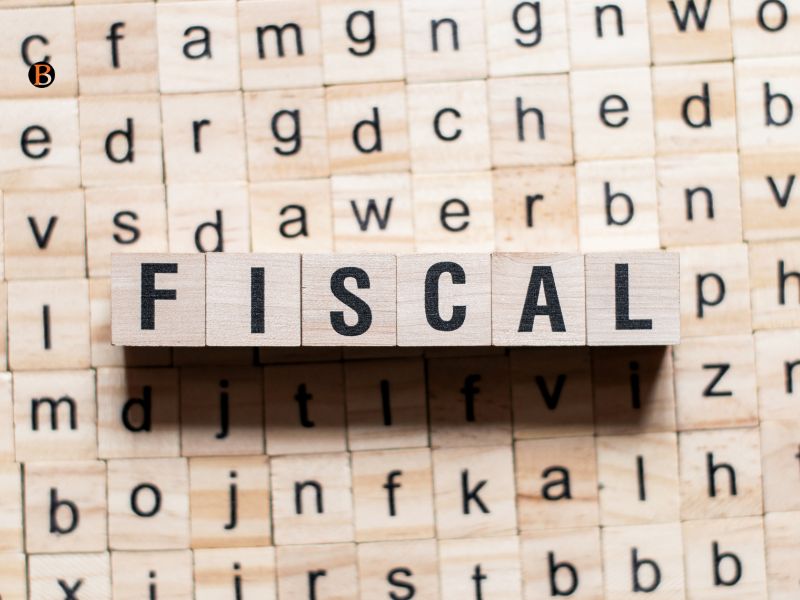.png)
Budget Has A Hint Of Consumption Impetus But Overwhelming Fiscal Drag
The Union Budget attempts to address the concerns of rising household income distress, but the fiscal math is overly optimistic on the revenue side and cautious on spending. The fiscal knot may persist into 2025-2026, which may lead to continued reductions in capital outlays. With total expenditure falling short of projected nominal GDP growth in 2025-2026, the glide path implies ongoing fiscal drag. The impact of the income tax rebate amounts to just 0.5% of household consumption.


Dhananjay Sinha, CEO and Co-Head of Institutional Equities at Systematix Group, has over 25 years of experience in macroeconomics, strategy, and equity research. A prolific writer, Dhananjay is known for his data-driven views on markets, sectors, and cycles.
February 1, 2025 at 1:18 PM IST
The Union Budget for 2025-2026 is contoured around the extant growth concerns relating to weakening household income, rising unemployment, and urban distress while also adhering to the fiscal consolidation path. Recognising the rising ruralisation over the past 12 years, the budget has emphasised the need to create rural opportunities so that migration is an option rather than a necessity.
- The budget's impetus comes from measures aimed at enhancing household disposable income, including:
- Rationalising tax deduction at source (TDS) on interest and rental incomes and removing TCS on goods sales.
- Raising income tax exemption limits, with zero tax up to ₹1.2 million.
- Focusing on employment, particularly in labour-intensive sectors like tourism, healthcare, and MSMEs (footwear, leather, toys, food processing).
- Formalising the gig economy through social security provisions, healthcare coverage, and integration with the e-Shram portal for gig workers.
- Expanding rural credit access by repositioning India Post Payments Bank and developing Grameen Credit Scores to meet SHG members' and rural households' credit needs.
In line with the Economic Survey's concerns, the budget introduces several measures aimed at fostering growth through deregulation and enhanced federal cooperation.
Central to this approach is the refinement of regulatory and fiscal measures under the asset monetisation plan for 2024-2029, which seeks to unlock the potential of public assets for greater economic efficiency. A high-level committee is being established to conduct a comprehensive review of non-financial sector regulations, certifications, licences, and permissions, aiming to streamline processes and reduce bureaucratic hurdles.
The Financial Stability and Development Council has been tasked with assessing the impact of current financial regulations to ensure they support economic resilience and growth. Adding to the reform momentum, the Jan Vishwas Bill 2.0 proposes to decriminalise over 100 provisions across various laws, fostering a more business-friendly environment and reducing the regulatory burden on enterprises.
The budget places a strong emphasis on state coordination through a range of initiatives designed to foster growth and resilience across sectors. A key focus is the Rural Prosperity and Resilience Programme, which aims to tackle underemployment in agriculture by creating more robust rural livelihoods. This is complemented by a comprehensive vegetable farming programme intended to diversify agricultural outputs and improve food security.
To boost industrial output, the budget introduces a national manufacturing mission developed in close partnership with states to promote local industries and drive economic expansion. Public-private partnership models are being encouraged to enhance infrastructure development and service delivery, with the government providing ₹1.5 trillion in interest-free loans to support state-led infrastructure projects.
Water security remains a priority, with collaborative efforts between the Centre and states to expand the rural piped water supply scheme, ensuring broader access to clean drinking water. In the energy sector, power reforms are aimed at improving intra-state electricity distribution and enhancing efficiency and reliability.
Tourism also receives a significant push, with plans for the joint development of the top 50 tourist destinations across India, creating new opportunities for employment and regional growth. Lastly, the budget outlines a national framework to help states promote Global Capability Centres (GCCs), positioning India as a competitive hub in the global services landscape.
The budget also seeks to streamline the import tariff structure to address duty inversion, thereby promoting manufacturing and exports:
- Key manufacturing sectors: industrial goods, pharmaceuticals, critical minerals, textiles, lithium-ion batteries, shipping, and telecom.
- Export-focused sectors: handicrafts, leather, marine products, and MRO services for aircraft and ships.
Fiscal Framework
The fiscal framework remains conservative, adhering to the fiscal glide path outlined in the FRBM statement. Revised estimates for 2024-2025 peg the fiscal deficit at 4.8% of GDP and is projected to decline to 4.4% in 2025-2026.
The 2025-2026 budget estimates rely on assumptions from the 2024-2025 budget. Nominal GDP is projected to grow by 10.1%, higher than the 9.7% advance estimates for 2024-2025 and 8.9% in the first half of 2024-2025. Total expenditure of ₹50.65 trillion represents a 7.4% increase over the 2024-2025 revised estimates, with gross and net tax collections projected to grow by 10.9%. Non-tax revenue, estimated at ₹5.83 trillion, is expected to grow by 10%, largely driven by RBI dividends (₹2.26 trillion).
Capital outlay is budgeted at ₹11.21 trillion, essentially reinstating the 2024-2025 budget estimates of ₹11.11 trillion to offset the shortfall in the 2024-2025 revised estimates of ₹10.18 trillion.
On the revenue expenditure side, total spending of ₹39.4 trillion reflects a 6.8% increase over the 2024-2025 revised estimates of ₹36.9 trillion, higher than last year's 6.2% growth. Fiscal adjustments in the 2024-2025 revised estimates indicate a greater shortfall in capital spending compared to revenue expenditure.
This trend will likely persist in 2025-2026 as tax collection estimates remain overly optimistic. This optimism is based on several factors:
First, the nominal GDP growth assumption of 10.1% for 2025-2026 exceeds the first half 2024-2025 (8.9%) and the projected 9.4% for the 2024-2025 advance estimates. The government is assuming it can collect taxes at a faster rate—1.1 times the economic growth—while the cyclically adjusted elasticity is estimated at 0.8 times. If the tax growth is more realistic at around 7.5%, the government could face a revenue shortfall of about ₹1.2 trillion.
The non-tax revenue projection of ₹5.83 trillion appears ambitious, driven mainly by RBI and PSU bank dividends.
We estimate a potential revenue shortfall of around ₹2 trillion.
With the fiscal consolidation glide path intact, similar expenditure trade-offs will likely occur in 2025-2026, leading to further cuts in capital spending. Given the shift towards addressing household income, maintaining revenue spending seems more likely, as observed in the 2024-2025 budget estimates.
Allocation for rural development is budgeted at ₹2.7 trillion for 2025-2026, representing a 42% increase over the 2024-2025 revised estimates. However, this sharp rise reflects the shortfall in 2024-2025, where actual spending fell 29% short of the budgeted ₹2.7 trillion. Net of interest payments, revenue spending at ₹26.64 trillion shows a modest 4.3% growth over the revised estimates for 2024-2025, compared to 5% growth in 2024-2025.
In summary, the budget remains markedly conservative on spending while excessively optimistic on revenue projections. The fiscal glide path continues to pose a fiscal logjam. Consequently, fiscal policy, while offering limited consumption support (0.5% of nominal private final consumption expenditure), will likely remain a drag on overall economic growth.



